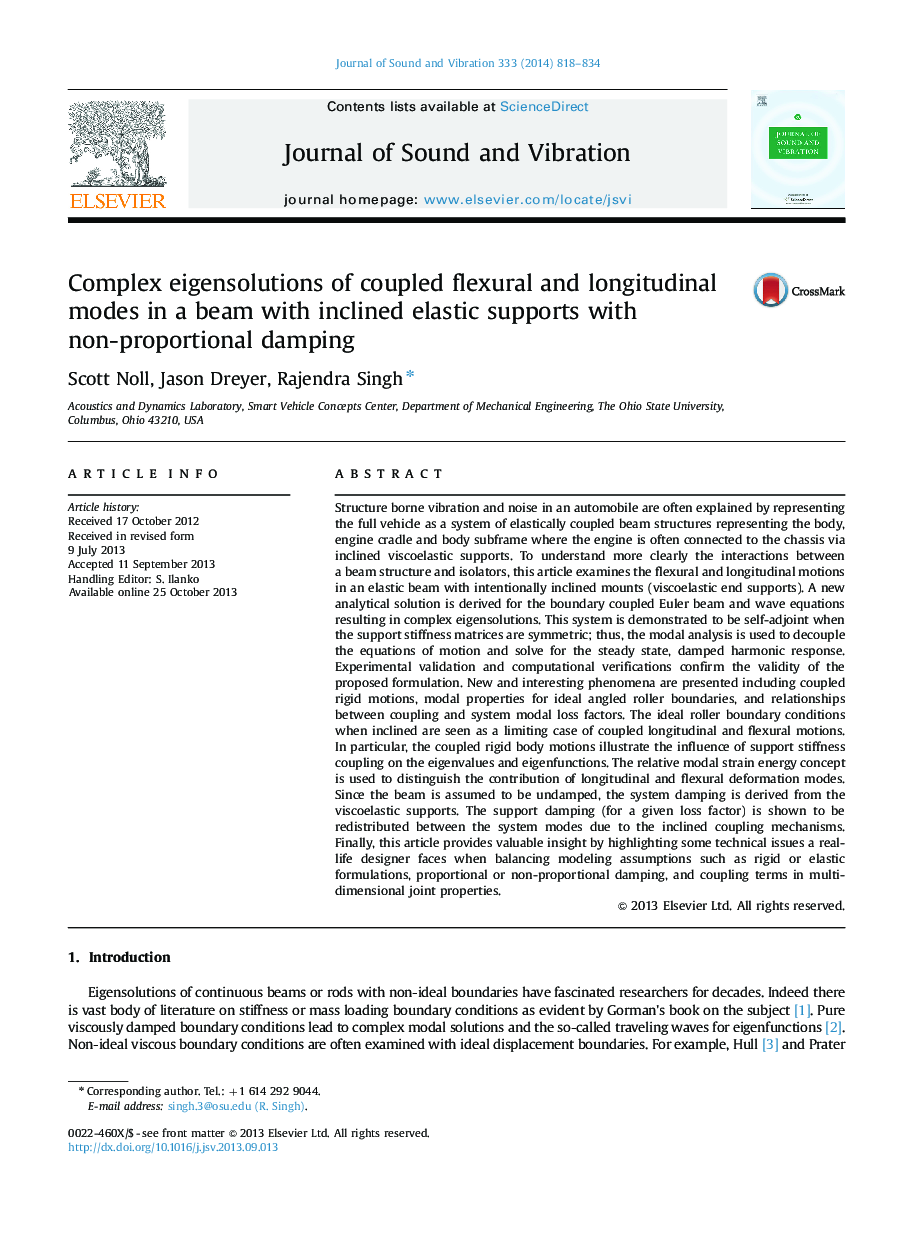| کد مقاله | کد نشریه | سال انتشار | مقاله انگلیسی | نسخه تمام متن |
|---|---|---|---|---|
| 10289337 | 509608 | 2014 | 17 صفحه PDF | دانلود رایگان |
عنوان انگلیسی مقاله ISI
Complex eigensolutions of coupled flexural and longitudinal modes in a beam with inclined elastic supports with non-proportional damping
ترجمه فارسی عنوان
مجتمع های ویژه ای از حالت های خمشی و طولی دو طرفه در یک پرتو با حمایت های کششی شیب دار با نوسان نامناسب
دانلود مقاله + سفارش ترجمه
دانلود مقاله ISI انگلیسی
رایگان برای ایرانیان
موضوعات مرتبط
مهندسی و علوم پایه
سایر رشته های مهندسی
مهندسی عمران و سازه
چکیده انگلیسی
Structure borne vibration and noise in an automobile are often explained by representing the full vehicle as a system of elastically coupled beam structures representing the body, engine cradle and body subframe where the engine is often connected to the chassis via inclined viscoelastic supports. To understand more clearly the interactions between a beam structure and isolators, this article examines the flexural and longitudinal motions in an elastic beam with intentionally inclined mounts (viscoelastic end supports). A new analytical solution is derived for the boundary coupled Euler beam and wave equations resulting in complex eigensolutions. This system is demonstrated to be self-adjoint when the support stiffness matrices are symmetric; thus, the modal analysis is used to decouple the equations of motion and solve for the steady state, damped harmonic response. Experimental validation and computational verifications confirm the validity of the proposed formulation. New and interesting phenomena are presented including coupled rigid motions, modal properties for ideal angled roller boundaries, and relationships between coupling and system modal loss factors. The ideal roller boundary conditions when inclined are seen as a limiting case of coupled longitudinal and flexural motions. In particular, the coupled rigid body motions illustrate the influence of support stiffness coupling on the eigenvalues and eigenfunctions. The relative modal strain energy concept is used to distinguish the contribution of longitudinal and flexural deformation modes. Since the beam is assumed to be undamped, the system damping is derived from the viscoelastic supports. The support damping (for a given loss factor) is shown to be redistributed between the system modes due to the inclined coupling mechanisms. Finally, this article provides valuable insight by highlighting some technical issues a real-life designer faces when balancing modeling assumptions such as rigid or elastic formulations, proportional or non-proportional damping, and coupling terms in multidimensional joint properties.
ناشر
Database: Elsevier - ScienceDirect (ساینس دایرکت)
Journal: Journal of Sound and Vibration - Volume 333, Issue 3, 3 February 2014, Pages 818-834
Journal: Journal of Sound and Vibration - Volume 333, Issue 3, 3 February 2014, Pages 818-834
نویسندگان
Scott Noll, Jason Dreyer, Rajendra Singh,
